Centos下 Nexus 3.x 搭建Maven 私服
Maven的原理就是将jar从远程中央仓库下载到PC磁盘的本地仓库,当本地仓库没有发现需要的jar就会去Maven默认的远程中央仓库Maven Central(由Apache维护)中寻找,每次需要新的jar后都要从远程中央仓库上下载。那么问题来了?这个远程的中央仓库一定有很多人使用那下载速度一定很慢,这个暂且不用考虑。 重要的是万一哪天公司外网连不上了咋办?而Nexus私服恰好可以解决这个问题。搭建私服的好处是Nexus有效解决了Maven对Apache的远程中央仓库的依赖,当项目需要新的jar时会先在nexus私服下载好以后才会下载到本地。如果发现私服已经存在这个jar包,则会直接从私服下载到本地Maven库,如果没有再去网络上下载。同时,我们也可打包自己的代码变成jar包上传到私服中供公司其他同事下载使用。
准备工作
- 安装Nexus 之前先确定是否已经安装JDK,这里安装的是jdk8版本(如何安装JDK步骤叙述,)

安装Nexus
- nexus下载地址
下载完成后解压安装
- 解压
tar -zvxf nexus-3.13.0-01-unix.tar.gz -C /opt/ 复制代码
- 环境变量配置
vim /opt/nexus-3.13.0-01/bin/nexus
//配置JDK 路径
INSTALL4J_JAVA_HOME_OVERRIDE=/opt/jdk1.8.0_181
复制代码
- 启动Nexus
/opt/nexus-3.13.0-01/bin/nexus start 复制代码

- 浏览器打开Nexus界面,默认端口号是8081(注意需要判断服务器是否开通了该端口号的监听,这里我将默认端口号改成9190)
//加入9190端口的监听
vim /etc/sysconfig/iptables
查看是否监听端口(如果配置了自己定义的端口,需要先访问该端口一次才能看到监听)
netstat -ntlp
//重启防火墙配置(不重启端口还是无法生效)
service iptables restart
//修改端口号
vim /opt/nexus-3.13.0-01/etc/nexus-default.properties
//重启Nexus
/opt/nexus-3.13.0-01/bin/nexus restart
Nexus其他命令
//停止
nexus stop
//查看状态
nexus status
默认登录用户名密码
admin
admin123
卸载
rm -rf nexus-3.13删除掉安装目录即可
//可以看到Nexus在浏览器中可以打开界面,部署成功,如下图
复制代码



配置jenkins,maven更新到Nexus私服
- 修改Jenkins服务器上的Maven的settings.xml文件(路径是Maven安装路径 /opt/apache-maven-3.5.4/conf/),加入maven访问nexus认证,访问Nexus的帐号密码为上面登录nexus的默认登录用户名密码
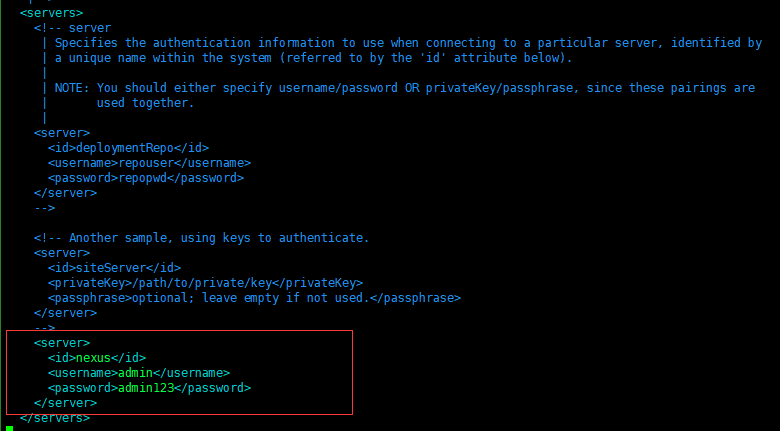
- maven 项目pom文件配置私服仓库
<repositories>
<repository>
<id>nexus</id> <!--id要和上一步配置的id一致-->
<name>local nexus</name>
<url>http://xxxxx:9190/repository/maven-public/</url>
<releases>
<enabled>true</enabled>
</releases>
</repository>
</repositories>
<pluginRepositories>
<pluginRepository>
<id>nexus</id>
<name>local nexus</name>
<url>http://xxxxx:9190/repository/maven-public/</url>
<releases>
<enabled>true</enabled>
</releases>
<snapshots>
<enabled>false</enabled>
</snapshots>
</pluginRepository>
</pluginRepositories>
复制代码
Nexus 默认的三种类型仓库,创建仓库的时候可以选择这三种
1.group(仓库组类型):又叫组仓库,用于方便开发人员自己设定的仓库;
2.hosted(宿主类型):内部项目的发布仓库(内部开发人员,发布上去存放的仓库)
3.proxy(代理类型):从远程中央仓库中寻找数据的仓库(可以点击对应的仓库的 Configuration 页签下 Remote Storage Location 属性的值即被代理的远程仓库的路径)
复制代码
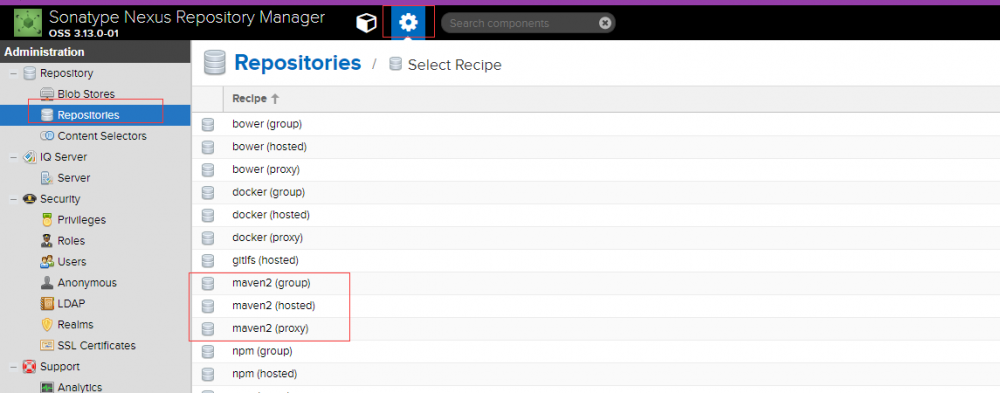
proxy(代理类型)
- 这里就是代理的意思,代理远程中央 Maven 仓库,当 项目构建访问中央库的时候,先通过代理去远程中央仓库下载依赖包到Nexus 仓库,然后再从Nexus仓库下载到本地。私服我们部署在内网服务器,只要其中一个人从远程中央库下来了,以后相同的依赖包就都是从Nexus私服上进行下载,这样大大加快下载速度,不怕远程中央仓库出现问题。
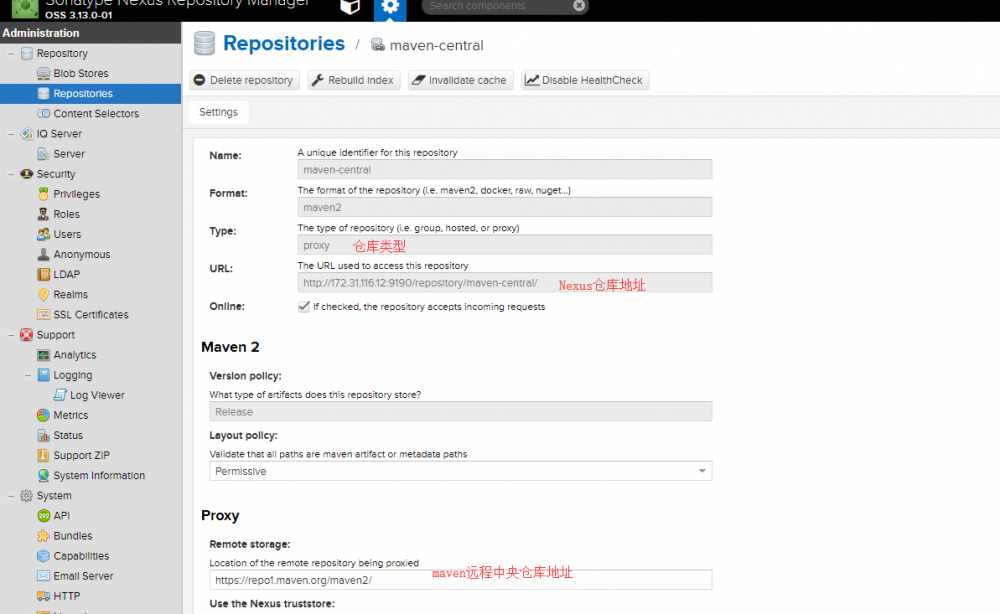
hosted(宿主类型)
- 创建布和代理方式创建差不多
- Hosted 是宿主机的意思,就是怎么把第三方的 Jar 放到私服上。 Hosted 有三种方式,Releases、SNAPSHOT、Mixed
group(仓库组类型)
- 将其他仓库类型合并一起(maven public就是group类型),如图所示将其他仓库合在一下提供对外使用
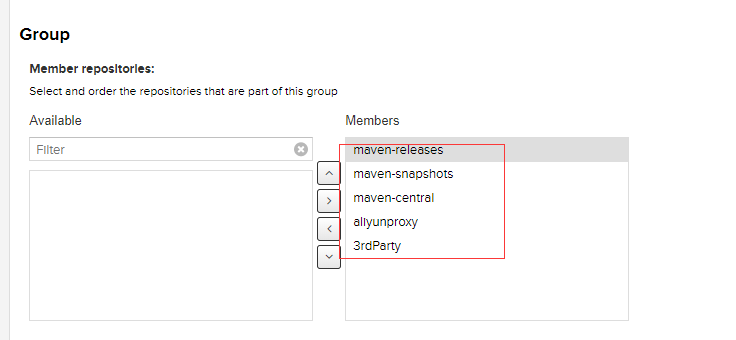
仓库属性说明
- maven-central:maven中央库,默认从https://repo1.maven.org/maven2/拉取jar
- maven-releases:私库发行版jar
- maven-snapshots:私库快照(调试版本)jar
- maven-public:仓库分组,把上面三个仓库组合在一起对外提供服务,在本地maven基础配置settings.xml中使用。
Nexus jar 包上传与删除
上传jar包
- 如果我们使用的远程maven中心库有jar包无法下载,或者是我们自己编译好的jar包提供给公司其他人,则可以将本地jar包上传到私服仓库
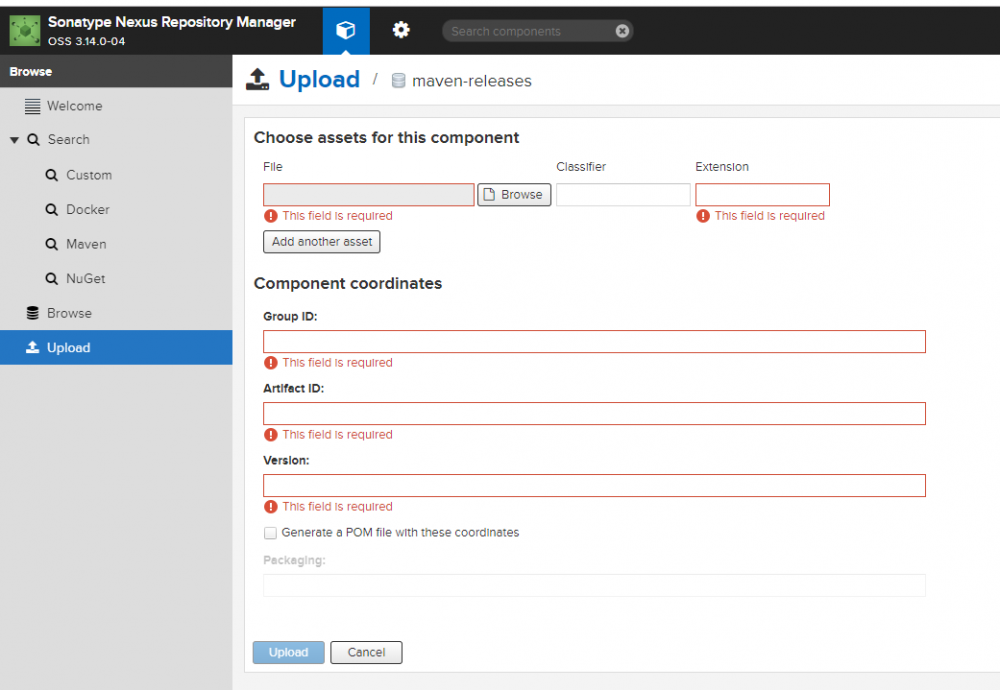
正文到此结束
热门推荐
相关文章
Loading...











![[HBLOG]公众号](https://www.liuhaihua.cn/img/qrcode_gzh.jpg)

